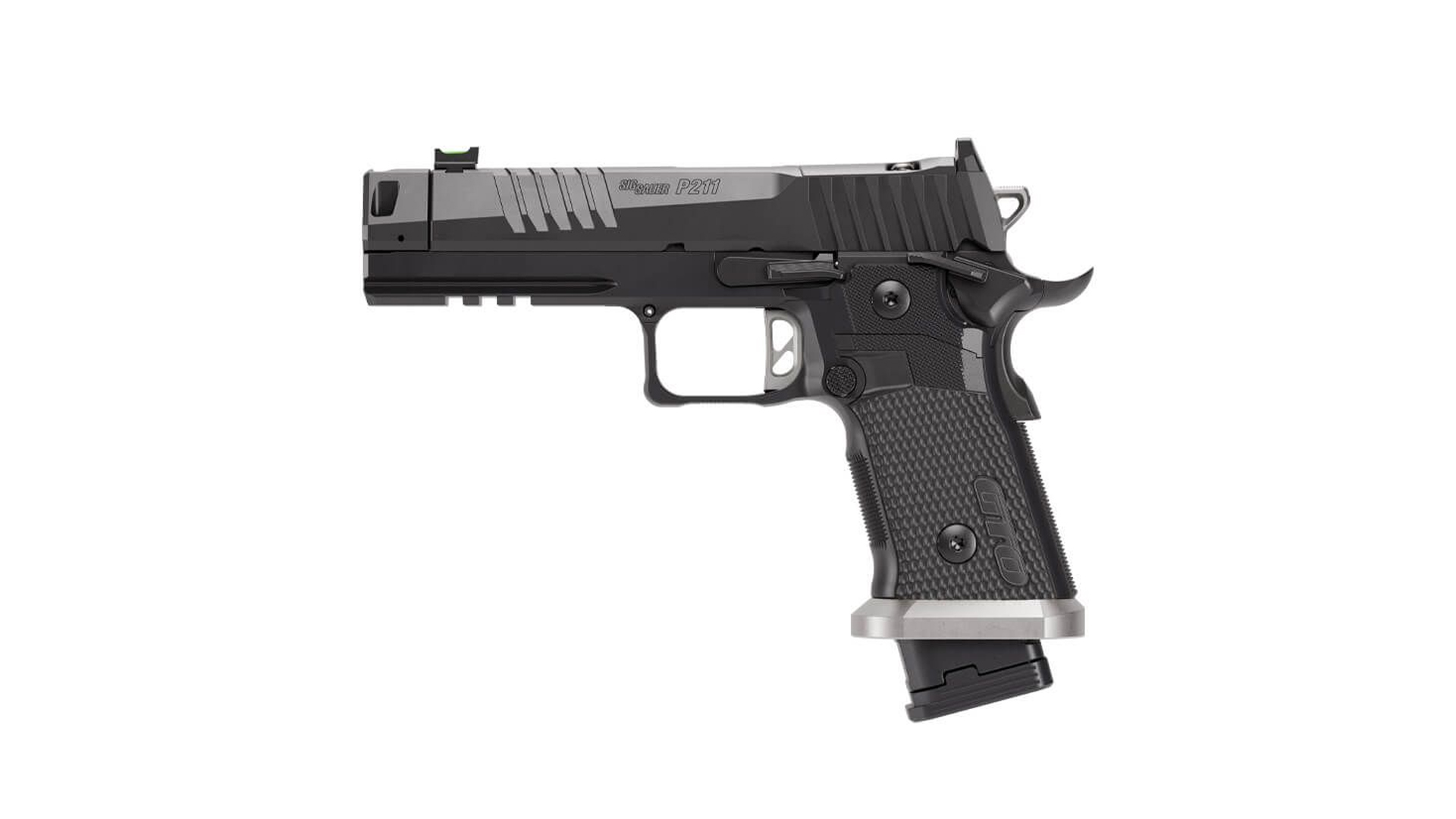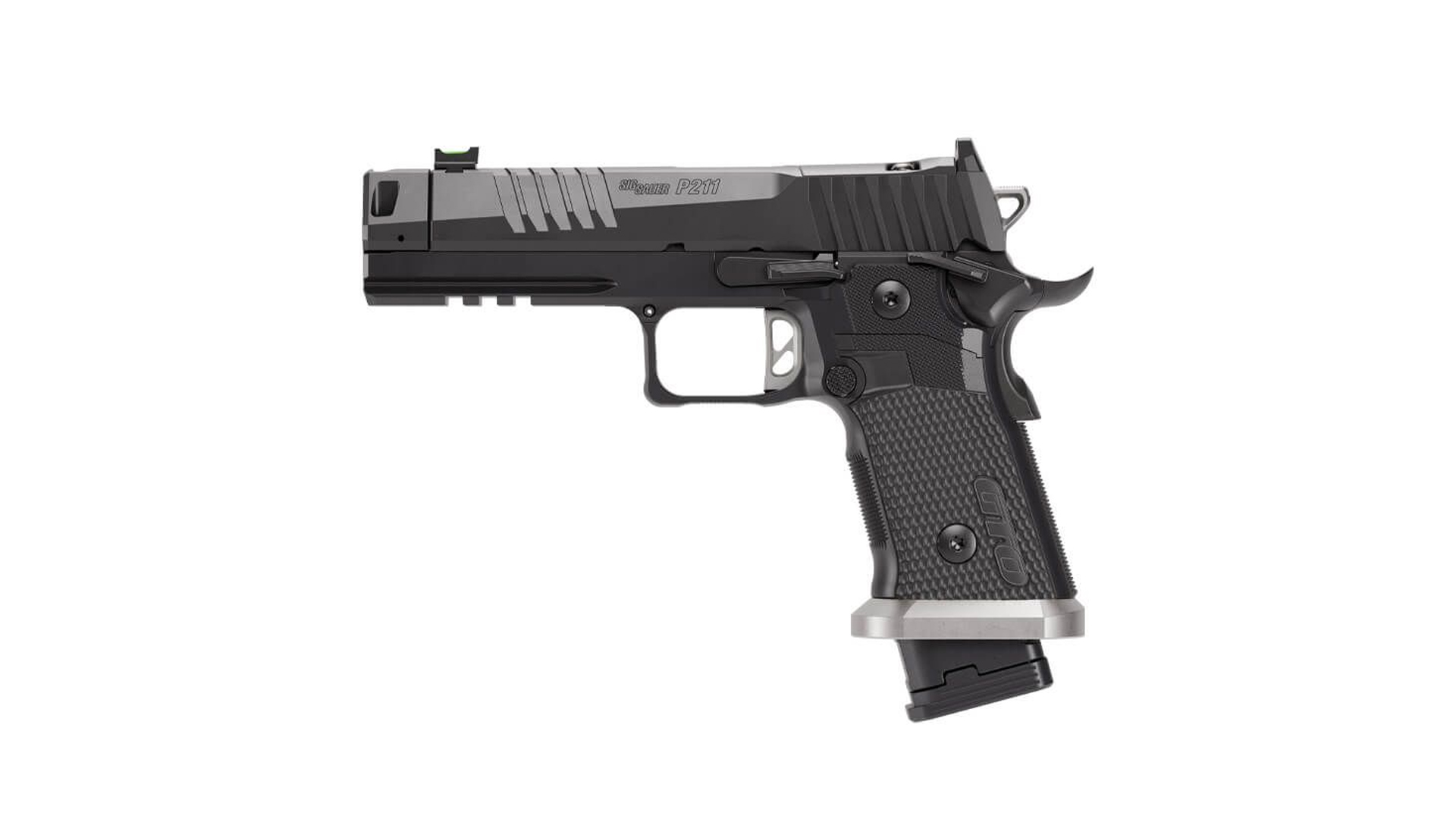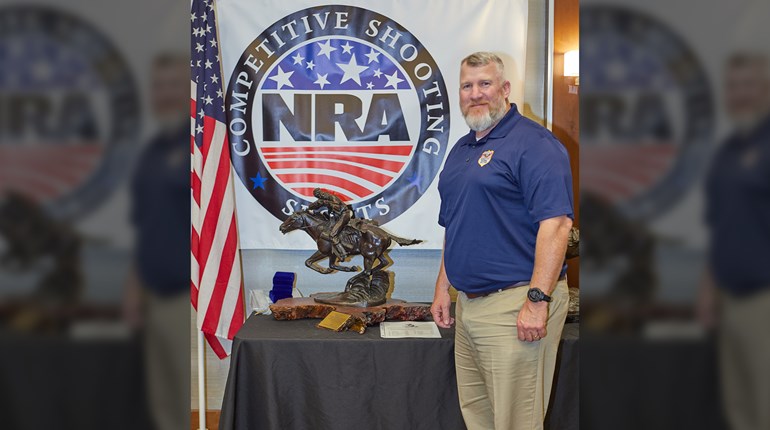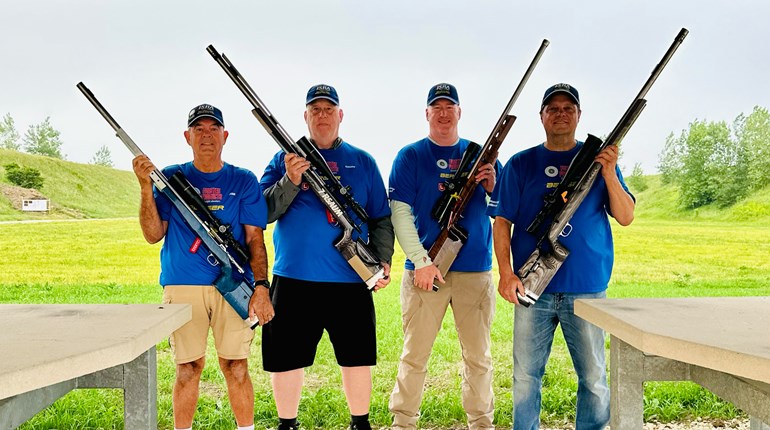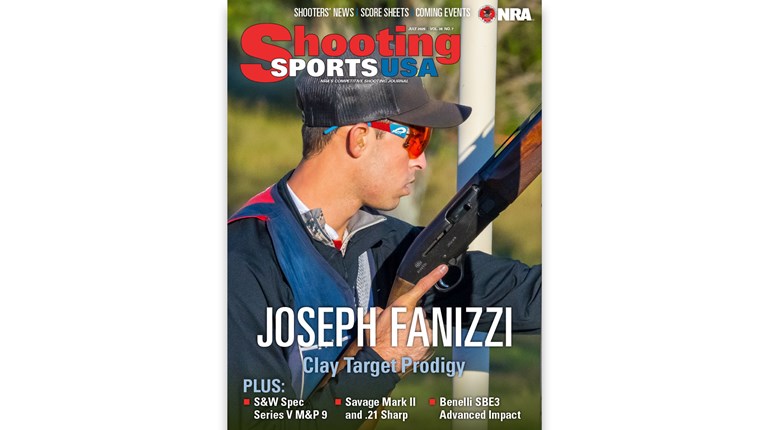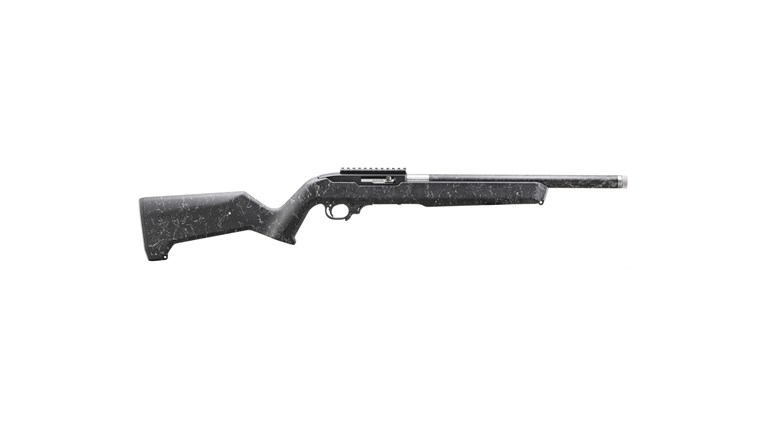
“Organized by the N.R.A. with the cooperation of State Rifle and Pistol Associations, the regional matches were conducted this summer for the third successive year as a temporary substitute for the Camp Perry National Meet.”
—The American Rifleman, December 1934
For the third straight year, federal funds were not made available for the National Matches in 1934. Initially, the War Department reserved $75,000 for National Board use, but the appropriation was vetoed by President Franklin D. Roosevelt’s budget director. To fill the void, the NRA organized regional tournaments in conjunction with state rifle and pistol associations, much like they did in 1933, to fire its championship .30 caliber and pistol events. And the hallowed grounds of Camp Perry provided the sights and sounds, albeit on a smaller scale, of the National Matches when it again hosted the NRA National Smallbore Championships.
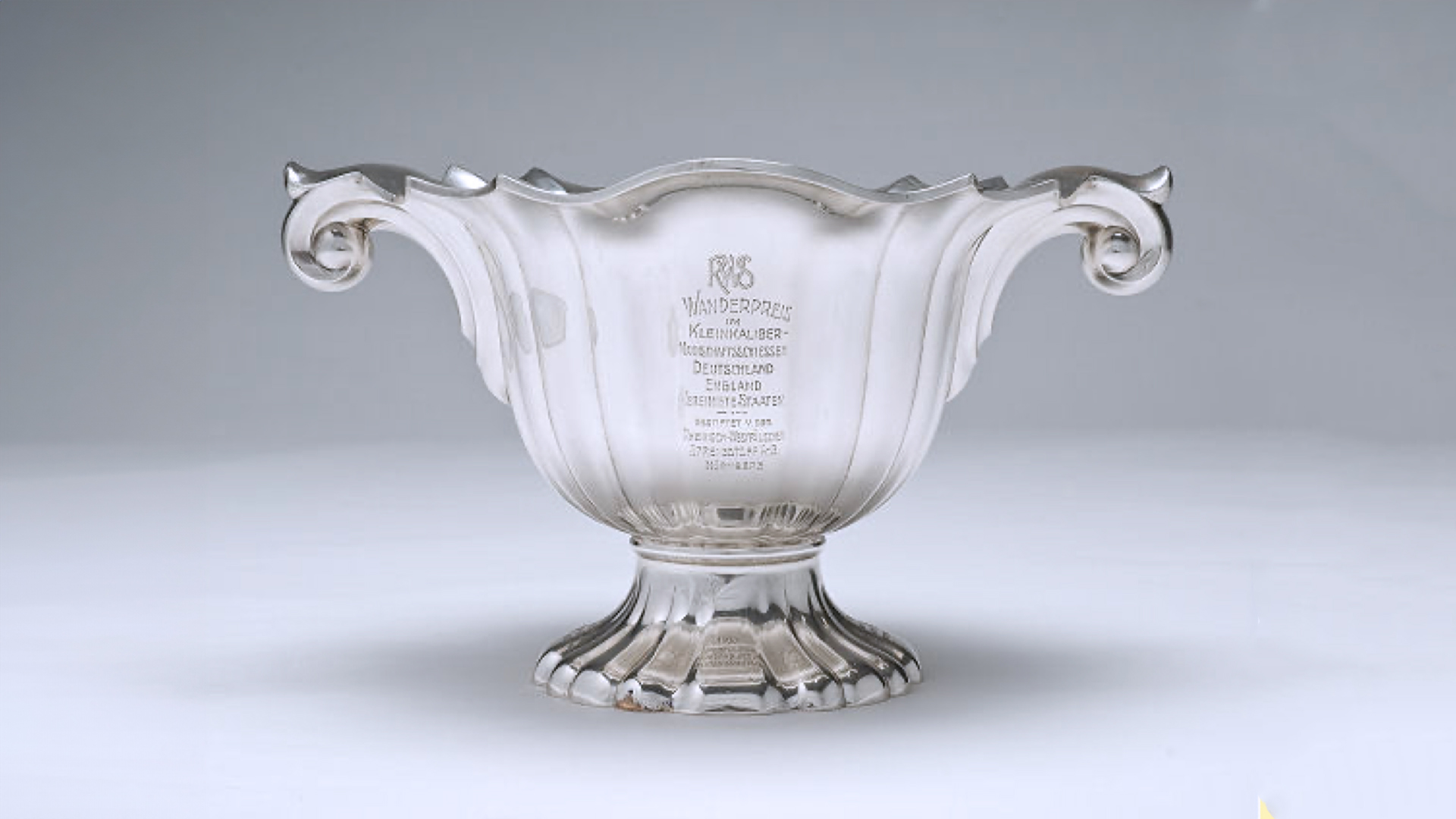
For 1934, there were 16 locations that featured NRA championship events and state association representatives referred to the old Camp Perry program for the specific matches they wanted to conduct at their tournaments. There was no restriction on the number of matches held and, like the year before, the NRA furnished medals with the appropriate state or regional clasp and awarded national trophies after ranking results from across the country. As it turned out, of the 15 individual contests fired that accounted for 4,400 entries, the President’s and Navy Matches proved the most popular, with participation totals of 726 and 705, respectively. The A.E.F. Roumanian Match was the most popular team event when it accounted for 35 out of 96 entries.
The locations and dates of the 16 regionals in 1934 were:
CALIFORNIA: September 1-3 at San Luis Obispo
FLORIDA: September 1-3 at Camp Foster, Jacksonville
INDIANA: September 22-23 at Frankfort
IOWA: September 1-3 at Fort Des Moines
MASSACHUSETTS: August 4-12 at Camp Curtis Guild, Wakefield
MICHIGAN: August 4-5 (western part of state); August 11-12 (eastern) at Grand Rapids; August 26 pistol matches fired in Ohio
MINNESOTA: September 1-3 at Fort Snelling
NEVADA: September 1-3 at Douglas County Rifle Range, Gardnerville
NEW JERSEY: September 1-4 at Sea Girt
NEW YORK: June 3-9 at Peekskill
OHIO: August 25-27 at Camp Perry (.30 cal.); May 26-27 at Dayton and Aug. 26 at Toledo (pistol)
TEXAS: September 27-29 at El Paso
UTAH: September 2-3 at Fort Douglas, Salt Lake City
VIRGINIA: September 26-29 at Quantico
WASHINGTON: September 1-4 at Fort Lewis
WISCONSIN: September 8-9 at Racine County Range, near Milwaukee
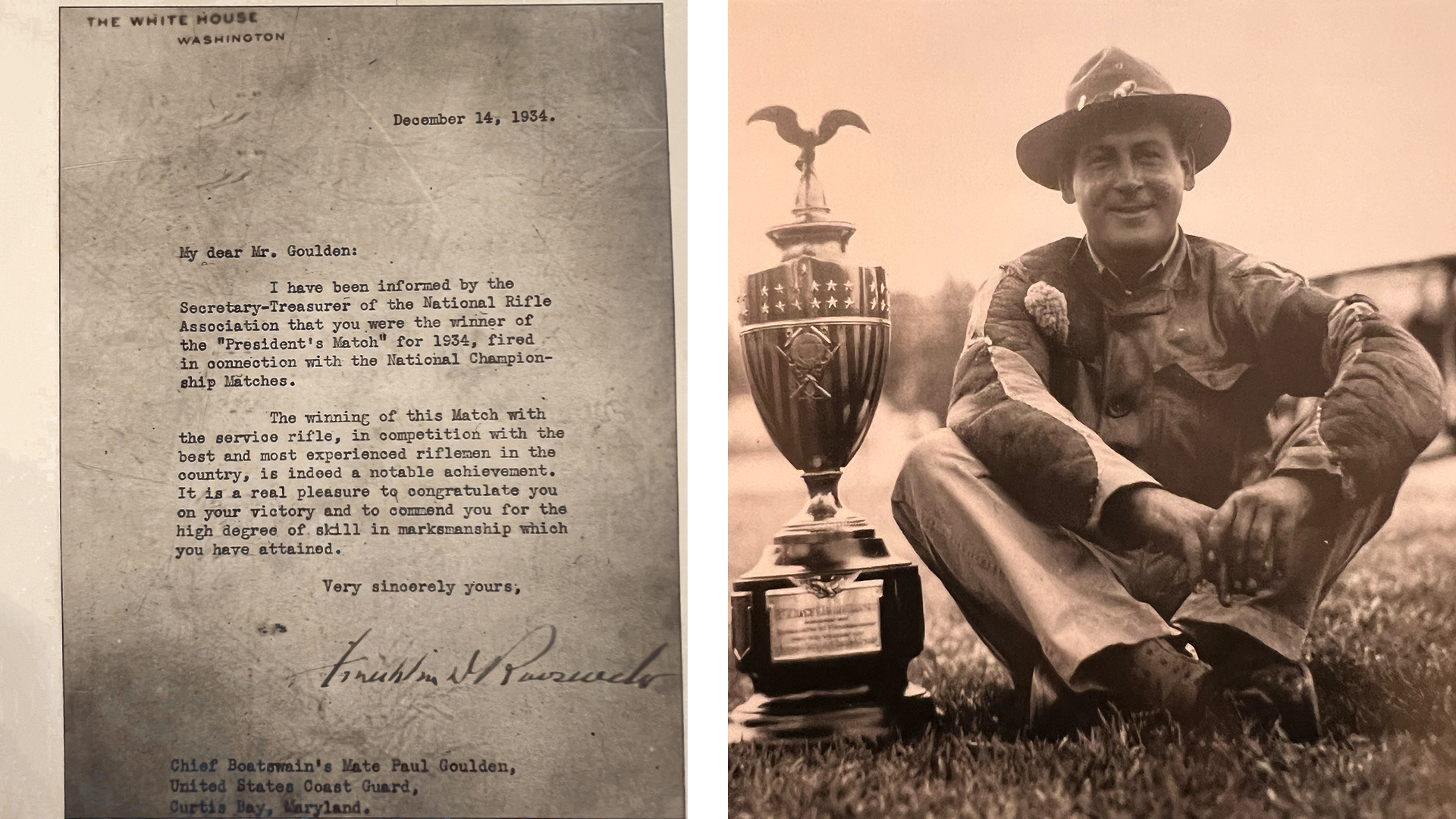
The Coast Guard’s Paul Goulden fired out of Wakefield, Massachusetts, in early August and ended up topping the entire President’s Match field, as well as finishing in the top five overall in both the Navy and Crowell Matches and sixth overall in the Marine Corps Match. A little more than a month later, he traveled down the east coast and participated in the Quantico shoot where he claimed the Wright Memorial Trophy as high aggregate scorer in the Navy, Leech, Coast Guard, Marine Corps, Wimbledon and President’s Matches. While in Virginia, Goulden fired a record score in the Navy Match, but since his match for record had already been fired at Wakefield, the higher score was not allowed.
On the pistol side, W.M. Stonesifer of the Los Angeles Police Department won the Clarke Trophy, emblematic of the NRA Individual Championship, in record fashion while competing at the Washington Regional, and five of his comrades posted a record score in their NRA Pistol Team Match victory.
For a while it was hoped that the War Department would sanction the firing of the National Board’s individual matches for rifle and pistol on the same regionalized format as the NRA events, but the authority was never granted and opportunities for competitors to earn the coveted “Legs on Distinguished” remained on hold.
“The smallbore game showed better resistance to the depression than the .30 caliber game.”
—The American Rifleman, March 1934
At Camp Perry, Maj. Harry Smith, USMC, was Executive Officer of the National Smallbore Matches that were conducted the week of August 19-26. Approximately 400 shooters participated—reportedly more than expected—and the Ohio National Guard, on hand to assist the Marines in staffing the ranges, had to hurriedly increase its numbers to meet demands.
In 1934 at Camp Perry, the smallbore range was moved from the extreme west end of the firing line to the main 200-yard high power range, and competitors were housed in close proximity to where they fired in new board-walled, copper-screened tents. Additionally, the popular Commercial Row was nearby and the squaw camp was in its familiar location near the clubhouse.
The championship aggregate was extended from four matches to five, as a 50-meter event fired under R.W.S. Match conditions was added. And for the first time sighters, of a sort, were allowed. A sighting target was hung before a match and time was allowed to ensure a solid zero at the distance concerned. This popular innovation cut down on the number of participants in the re-entry matches and signaled the eventual demise of the re-entry match schedule.
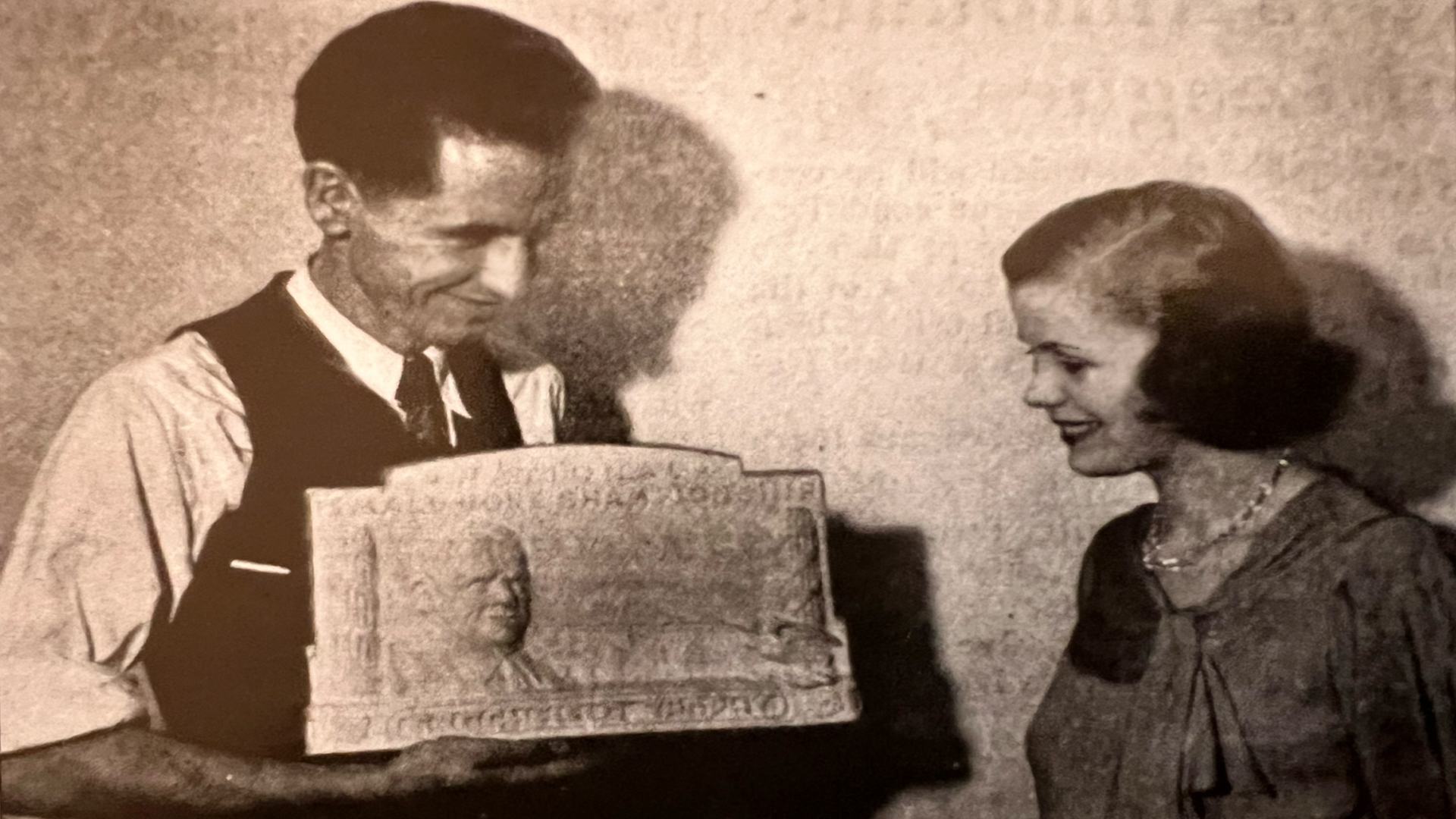
The tournament opened with the Camp Perry Individual Match that was expanded to 20 record shots at 50 and 100 yards, and 10 at 200 yards. The match also carried its own trophy when the Western Marksman Trophy was reassigned from the discontinued East-West Team Match. Three of the championship sub-aggregates were fired on the second day and one of them, the Individual Long-Range Match, underwent a transformation when specifications for its firing changed from any sight to metallic. The NRA’s belief that competitors would welcome the challenge of a 20-shot match at 200 yards with iron sights was verified when 184 people lined up to shoot. Bill Schweitzer, one of many hard-holding smallbore sharks of the day, fought through tricky conditions for a score of 193 and the Peters Trophy.
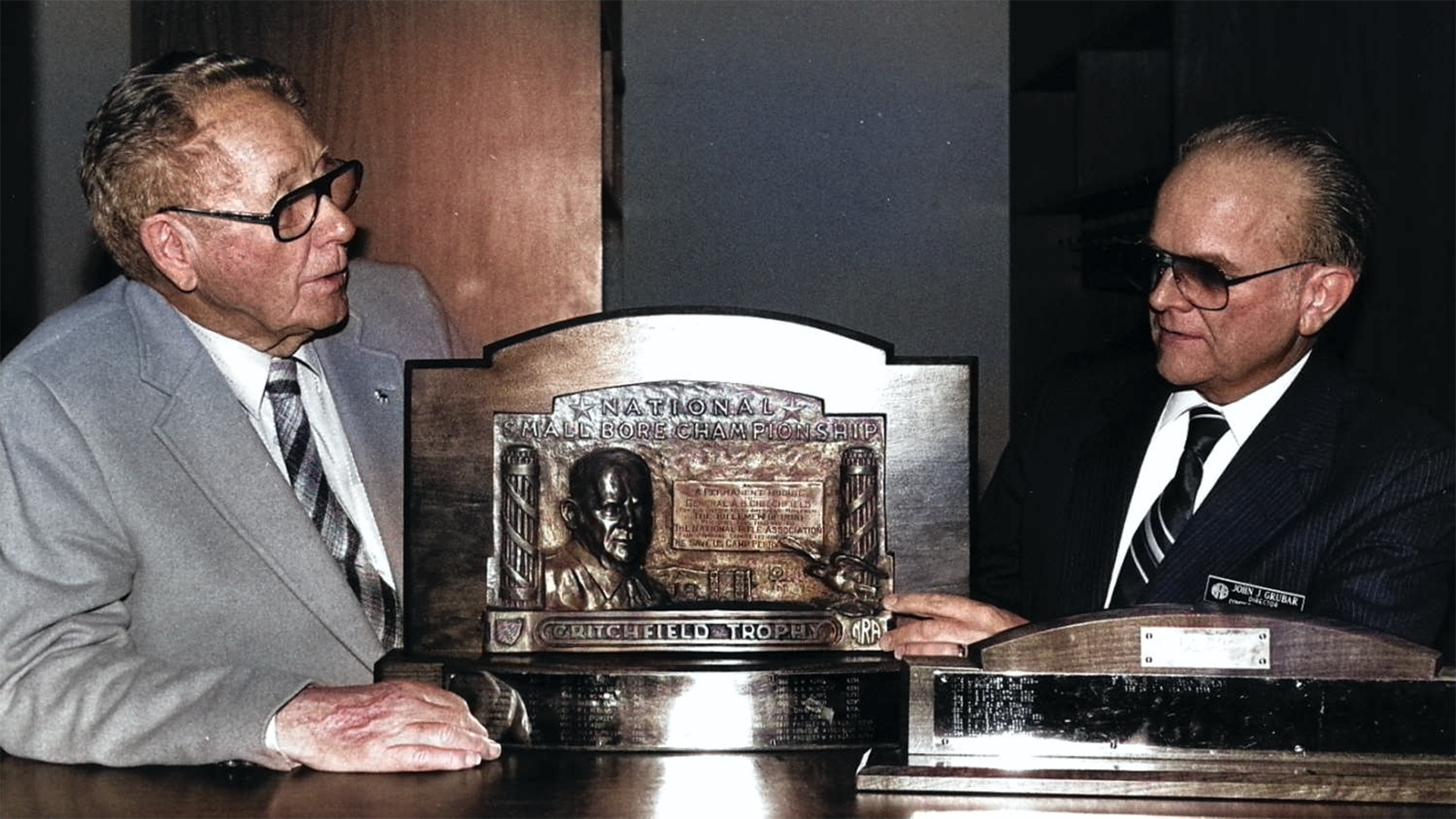
The smallbore national championship was eventually decided by 40 shots at 50 meters as the likes of former National Champion Fred Kuhn (1931), Thurman Randle, Bill Woodring and E.L. Lord were in the hunt going into the last match. The final course of fire was familiar, but the unfamiliar international target required different apertures to accommodate the larger black of the bull, as well as harder holding to deal with the smaller 10-ring. At the conclusion of the 50-Meter Individual Match, not one of the top four contenders for the national crown broke the top 10. But it was Lord, in 12th place, who finished with the highest aggregate and became the first person to be awarded the Critchfield Trophy, a bronze plaque that bears the likeness of Camp Perry founder Ammon Critchfield and was presented in 1934 to the NRA by the riflemen of Ohio.
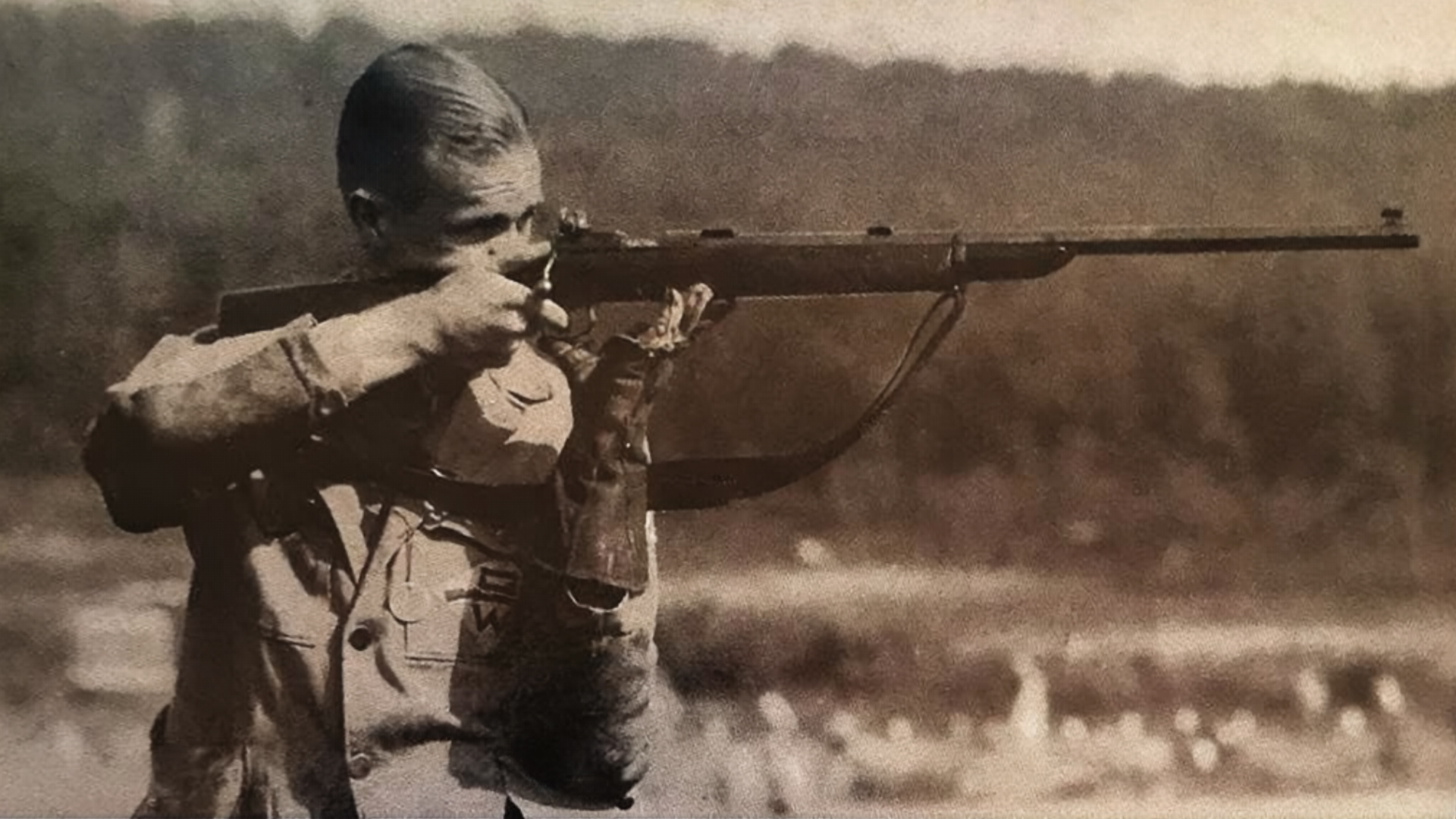
Position shooting, which had been conducted sporadically since the smallbore championships began in 1919, took on a more formal appearance this year when 33 men fired in the Harry M. Pope Appreciation Match, named in honor of the famous barrel maker and practitioner of Schuetzen shooting. The 60-shot contest was divided into three stages: prone, kneeling and standing at 50 meters, and it was Frank Parsons, Jr., of Washington, D.C., who won on the strength of his kneeling skills. Twenty-five years later, it was the Parsons family who donated the Frank Parsons Memorial Trophy for the winner of the smallbore position championship, which originated in 1957. In 1959, the championship for the inaugural Parsons Trophy was a 160-shot, four-position event fired at 50 yards and 50 meters. The transition to the modern three-position championship took place in 1978 when competitors vying for the Parsons Memorial award were first required to fire a 240-shot aggregate at 50 meters.
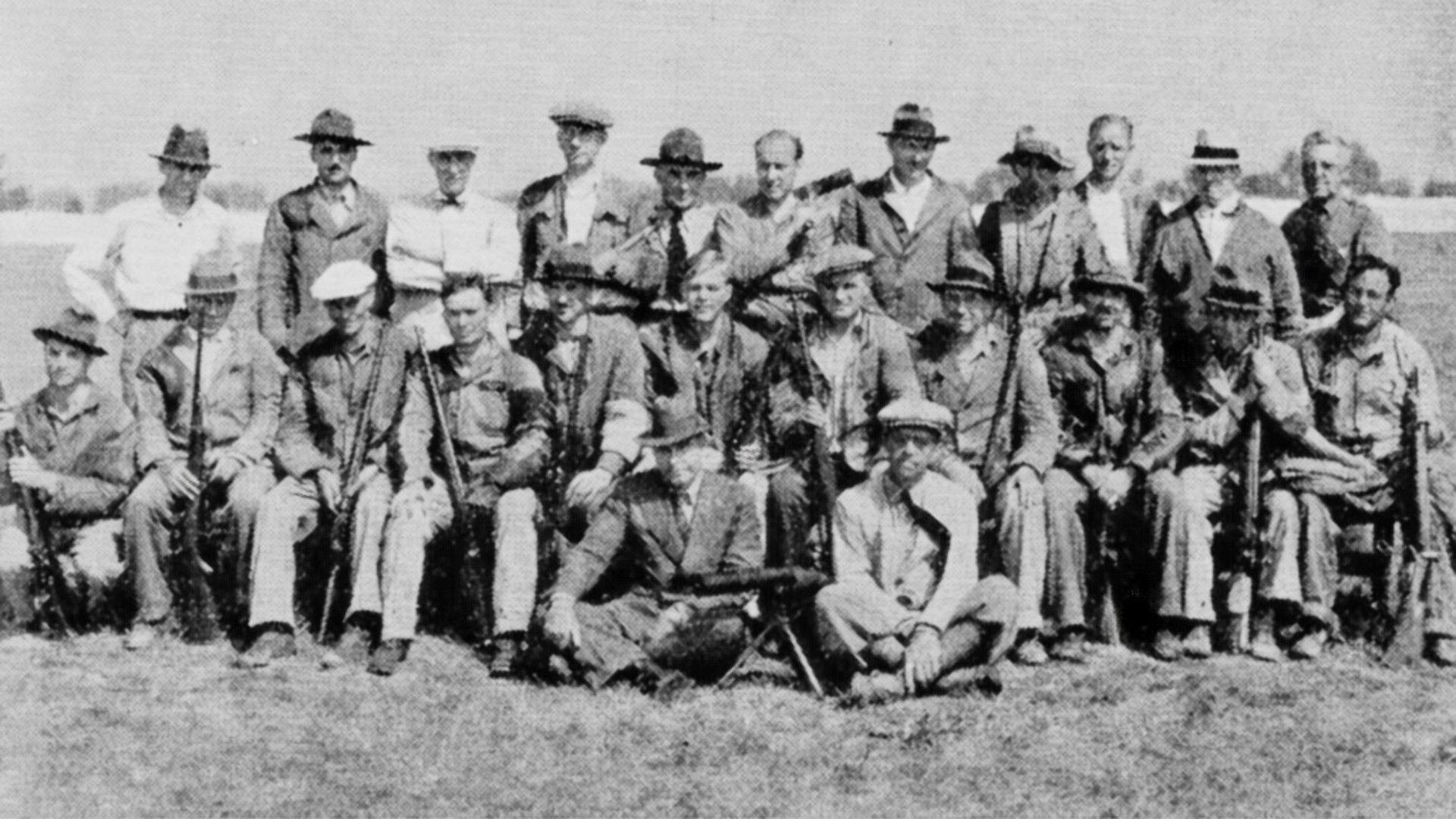
U.S. shooters swept the international postal events as victories in the R.W.S., International Railwaymen’s and FIDAC preceded the culminating Dewar win, where a record 7950 score was posted. Highlights from the matches included Sam Bond registering the first perfect 400 in the RWS followed by another possible in the Dewar, while in the Railwaymen’s Match, Mrs. E.A. Holcomb became the first woman participant. Her sixth place overall finish was three points better than her husband’s and the match marked the first time that spouses appeared on the same results bulletin.
1934 National Matches Fact
Of the 14 states that conducted President’s Matches at regional tournaments, 12 were represented in the President’s Hundred. The Middle Atlantic Regional at Quantico, Virginia, hosted the most NRA events (15) overall while the Wisconsin Regional held the fewest (two).



